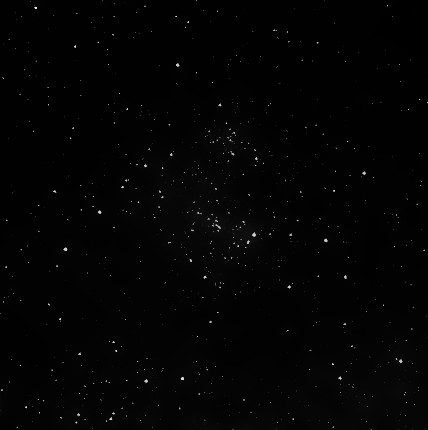
William Herschel discovered NGC 6755 = H VII-19 = h2030 on 30 Jul 1785 (sweep 416) and recorded "a pretty compressed cluster of pS scattered stars, of various magnitudes and colour, 12 or 15' diameter. On 21 Aug 1791 (sweep 1017), he recorded "a cl of stars of various sizes, considerably rich, the condensed part of it is divided in two." On 13 Aug 1830, JH described a "vL, v rich cluster, composed of 2 or 3 clustering groups running together; place that of the most condensed part." His position matches the richest part of the cluster.
200/250mm - 8" (8/28/81): large, scattered, two parts are resolved into rich clumps.
400/500mm - 17.5" (8/8/91): at 140x this is a bright group of 80 stars mag 10-14 in a 10' diameter. The stars are arranged in two groups separated by a fairly wide, obvious dark rift oriented SW-NE. The southern star group is larger and richer (about 50 stars) and contains several stars in two rich subgroups. The northern group is also catalogued as Czernik 39. A mag 10 star is at the west edge of the northern group. NGC 6756 lies 30' NE.
600/800mm - 24" (8/27/14): although the listed diameter is 15', the most eye-catching region extends only 5' and is described as the southern group in the earlier observation. The stars are arrange in two main groups. On the west side is a "U" shaped group of a dozen stars, open to the northwest, with the brightest mag 10.3 star at the southwest end of the loop. A nice unequal pair (~12" separation) is ~40" SE. Another couple of pairs (one very close) is along the east side of the loop. A smaller (~2' dia) but richer group of a dozen stars is 2'-3' NE. A long looping string of ~20 stars, including two 10th magnitude, begins close southeast of this group and curves to the south and west, ending in a small knot of 4 stars. The region between this loop and the two groups described above contains 10-12 mag 15 stars.
Notes by Steve Gottlieb